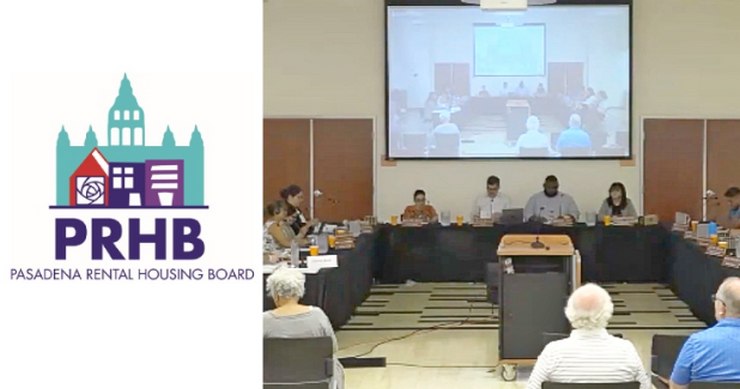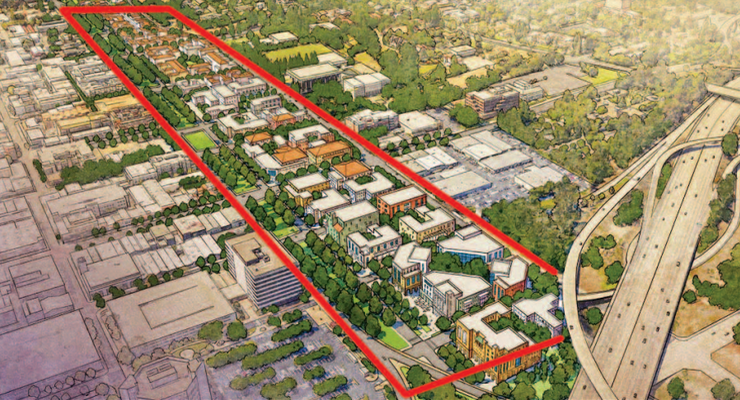 In Pasadena and statewide, there is no question that there is a housing crisis, but Measure H is not the way to fix it and may actually make the situation in Pasadena much worse. In city after city and study after study, rent control provides a short-term relief to current renters but results in higher rents and lower housing supply in the long-run. Right when we need to be expanding our housing supply, Measure H would hamstring any effort to do so.
In Pasadena and statewide, there is no question that there is a housing crisis, but Measure H is not the way to fix it and may actually make the situation in Pasadena much worse. In city after city and study after study, rent control provides a short-term relief to current renters but results in higher rents and lower housing supply in the long-run. Right when we need to be expanding our housing supply, Measure H would hamstring any effort to do so.
If Measure H were to take effect, three quarters of the rental stock in Pasadena would be limited to rent increases of 75% of the Consumer Price Index for multifamily rental units. The economic issue at hand is that these properties now become liabilities for property owners rather than assets. There would be increased economic pressure on property owners to either transform those units back into assets or cut any future losses and remove the units altogether (none of which would or could be prevented by Measure H or any state law). On the tenant side of the equation, an immediate reduction in rental increases would provide some temporary relief, but it would also decrease the movement of tenants from renting to ownership. This right here is the real danger of rent control—a reduction in tenant mobility. Affordable housing builders (those who actually create the housing, not just advocates), they will tell you that the end goal is always to move people towards home ownership. Measure H is fundamentally antithetical to affordable housing because, while it does provide temporary relief to current renters, rent control does so at the expense of future renters. Should Measure H pass, property owners would convert the rental units or eliminate them, in both cases resulting in a reduction of the rental stock. Tenants with less incentive to move towards ownership stay in units longer than they otherwise would. These units are also, effectively off the market and further reducing the rental stock in Pasadena.
Economically, Measure H can only affect the supply of rental housing, but it cannot affect demand for units. A decrease in supply of rental housing can only result in an increase in rental prices for the quarter of all units for which Measure H does not apply. With greater profits from the market rate units, property owners have a further incentive to build expensive market rate units, all while removing rent controlled units from the supply. This combination of a decrease in the supply of low-cost, rent controlled units and an increase in expensive, market rate units is an incredibly efficient way to gentrify a city. Case in point: when San Francisco implemented very similar rent control in 1994, a 2017 Stanford University study found that citywide rent increase of 7%. That same 2017 study also found that rent control resulted in a 15% decrease in tenant mobility and an overall welfare loss to all tenants of $5,000,000,000. Economic analyses really aren’t necessary to assess the effects of rent control in San Francisco, as no sane person would consider SF to be an affordable city in which to live (not when parking spots are going for $90,000).
This isn’t a particularly pessimistic view rather than just a natural economic consequence of Measure H’s rent control policies. For Measure H to be economically successful, the savings afforded to current tenants would have to be such that they could increase their mobility towards home ownership; however, Measure H does not address the main cause of the housing crisis, the present lack of affordable homes. The economic efficacy of Measure H is non-existent, but action must be taken to mitigate the effects of the housing crisis and contribute toward a solution.
Economic experts while effectively unified in their assessment of rent control as detrimental to a city’s housing supply (93% in a 1992 study). They have a similar consensus on a better solution for areas facing significant rent increases—rental subsidies. Rental subsidies that could be funded by a similar per-unit fee on all rental properties. This would, in effect, spread out the cost of rental increases across all units and lessen or eliminate the impacts of rental increases on those who struggle to afford it otherwise. We must also accept that this housing crisis does not exist in a vacuum and we are not the only city facing one. Believe it or not, Pasadena is and has been a leader in the building of affordable housing in the region, but we also bear an astounding burden placed upon us by our neighbors. We need to work with the County and other joint governmental organizations (like the Council of Governments and the Joint Powers Agreement) to expand housing and accessibility in the entire region; because as it stands now, we’re bailing water into the ocean while our neighbors are bailing their water into our boat.
Measure H will absolutely help current renters by limiting their rent increases, but it does so by pushing the burden onto future renters, worsening our housing crisis and turning Pasadena into San Francisco-lite with less housing and sky-high rents. Pasadena has an opportunity to lead the region in affordable housing and accessibility, but there is a lot of work to do, and it can only be done if we start by defeating Measure H.
Gabo Lizardo, Pasadena Resident
Got something to say, email Managing Editor André Coleman, at andrec@pasadenanowmagazine.














 0 comments
0 comments


